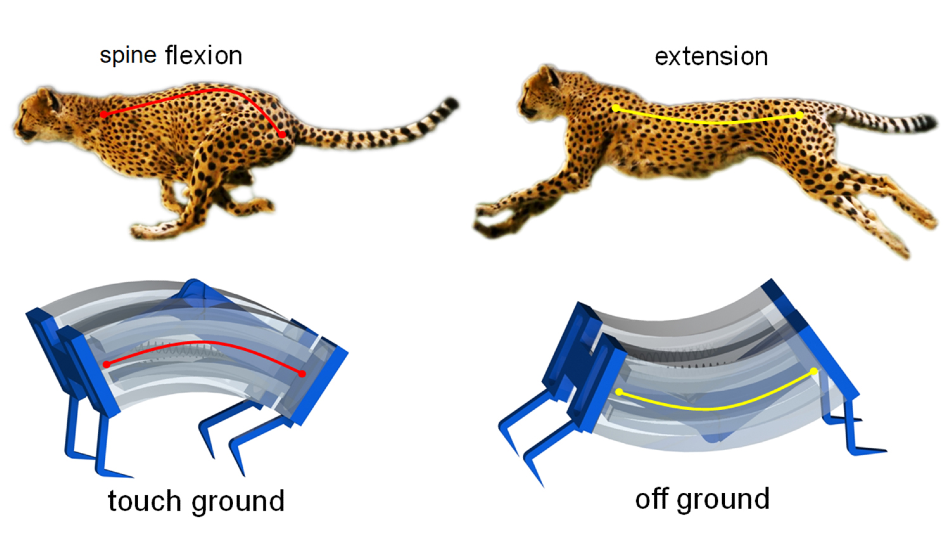
Image Credit: NC State University.
“Switching between the two states releases a significant amount of energy, allowing the robot to quickly exert force against the ground. This enables the robot to gallop across the surface, meaning that its feet leave the ground. Previous soft robots were crawlers, remaining in contact with the ground at all times. This limits their speed,” added Yin.
To date, the quickest soft robots could move at speeds of up to 0.8 body lengths per second on flat, solid surfaces. The latest class of soft robots, known as “Leveraging Elastic instabilities for Amplified Performance” (LEAP), are capable of reaching speeds up to 2.7 body lengths per second—over three times faster—at a low actuation frequency of nearly 3 Hz.
Also, the new robots can run up steep inclines, which could be impossible or difficult for soft robots that do not exert much force against the ground.
These “galloping” LEAP robots weigh around 45 g and are about 7 cm long.
Moreover, the scientists showed that swimming speeds for soft robots could be enhanced through the LEAP design. By fixing a fin, and not feet, a LEAP robot could swim at a speed of 0.78 body lengths per second, in contrast to 0.7 body lengths per second for the earlier fastest swimming soft robot.
We also demonstrated the use of several soft robots working together, like pincers, to grab objects. By tuning the force exerted by the robots, we were able to lift objects as delicate as an egg, as well as objects weighing 10 kilograms or more.
Jie Yin, Study Corresponding Author and Assistant Professor, Mechanical and Aerospace Engineering, North Carolina State University
According to scientists, this study is a proof of concept, and they hope the design can be modified to create LEAP robots that are more powerful and quicker.
Potential applications include search and rescue technologies, where speed is essential, and industrial manufacturing robotics. For example, imagine production line robotics that are faster, but still capable of handling fragile objects.
Jie Yin, Study Corresponding Author and Assistant Professor, Mechanical and Aerospace Engineering, North Carolina State University
Yin continued, “We’re open to collaborating with the private sector to fine-tune ways they can incorporate this technology into their operations.”
The paper titled “Leveraging elastic instabilities for amplified performance: spine-inspired high-speed and high-force soft robots” was published in the Science Advances journal. The first author of the study is Yichao Tang, a former PhD student of Jie Yin when Yin was on faculty at Temple University.
The co-authors of the paper are Yinding Chi, a PhD student at NC State; Omid Maghsoudi and Andrew Spence of Temple; Jiefeng Sun and Jianguo Zhao of Colorado State University; and Tzu-Hao Huang and Hao Su of the City University of New York.
The study was financially supported by the National Science Foundation under grants 2010717 and 2005374.
Journal Reference:
Tang, Y., et al. (2020) Leveraging elastic instabilities for amplified performance: Spine-inspired high-speed and high-force soft robots. Science Advances. doi.org/10.1126/sciadv.aaz6912.